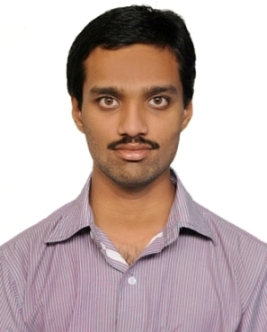Course abstract
At the beginning of this course, a brief introduction will be given to optimization. The principle of optimization will be explained in detail. The working principles of some traditional tools of optimization, namely exhaustive search method, random walk method, steepest descent method will be discussed with suitable numerical examples. The drawbacks of traditional tools for optimization will be stated. The working principle of one of the most popular non-traditional tools for optimization, namely genetic algorithm (GA) will be explained in detailed. Schema theorem of binary-coded GA will be discussed. The methods of constraints handling used in the GA will be explained. The merits and demerits of the GA will be stated. The working principles of some specialized GAs, such as real-coded GA, micro-GA, visualized interactive GA, scheduling GA will be discussed with suitable examples. The principles of some other non-traditional tools for optimization, such as simulated annealing, particle swarm optimization will be explained in detail. After providing a brief introduction to multi-objective optimization, the working principles of some of its approaches, namely weighted sum approach, goal programming, vector-evaluated GA (VEGA), distance- based Pareto-GA (DPGA), non-dominated sorting GA (NSGA) will be explained with the help of numerical examples.
Course Instructor

Prof. Dilip Kumar Pratihar
Dilip Kumar Pratihar received BE (Hons.) and M. Tech. from REC (NIT) Durgapur, India, in 1988 and 1994, respectively. I obtained my Ph.D. from IIT Kanpur, India in 2000. I received University Gold Medal, A.M. Das Memorial Medal, Institution of Engineers\u2019 (I) Medal, and others. I completed my post-doctoral studies in Japan and then, in Germany under the Alexander von Humboldt Fellowship Programme. I am working now as a Professor (HAG scale) of IIT Kharagpur, India. My research areas include robotics, soft computing and manufacturing science. I have published about 200 papers, mostly in various international journals. I have written a textbook on \u201cSoft Computing\u201d, co-authored another textbook on \u201cAnalytical Engineering Mechanics\u201d, edited a book on \u201cIntelligent and Autonomous Systems\u201d, co-authored reference books on \u201cModeling and Analysis of Six-legged Robots\u201d, \u201cModeling and Simulations of Robotic Systems Using Soft Computing\u201d and \u201cModeling and Analysis of Laser Metal Forming Processes by Finite Element and Soft Computing Methods\u201d. Recently, I have published another textbook named \u201cFundamentals of Robotics\u201d. I have guided 17 Ph.D.s. I am in editorial board of 14 International Journals. I have been elected as FIE and MIEEE. I have completed a few sponsored (funded by DST, DAE, MHRD) and consultancy projects.
Teaching Assistant(s)
Course Duration : Feb-Mar 2018
View Course
Enrollment : 20-Nov-2017 to 05-Feb-2018
Exam registration : 08-Jan-2018 to 07-Mar-2018
Exam Date : 28-Apr-2018
Enrolled
686
Registered
41
Certificate Eligible
33
Certified Category Count
Gold
6
Silver
0
Elite
19
Successfully completed
8
Participation
0
Enrollment Statistics
Total Enrollment: -1
Registration Statistics
Total Registration : 0
Assignment Statistics
Feedback Videos
Exam score
Final score


.jpg)
.jpg)
.jpg)

